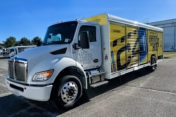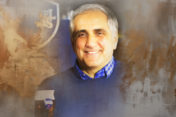Packaging
Bottler Deep Dive: Coca-Cola Beverages Florida Goes Big on Automation, Efficiency
Meanwhile, CEO Troy Taylor Sees Possible New Horizon in Alcohol
Read More
Major BevCos Report ‘Resilient’ Demand in 2024
Executives Responding to Weakness Among Lower-Income Consumers
Read More
Branded Bottled Water Leader BlueTriton Pursues Premium Strategy, CEO Says
Growth Priorities Include Aluminum Bottles, Saratoga, Expanded 5-Gallon Reach
Read More
Big Geyser Incubates New Crop of Aspiring Stars, Acquisition Targets
Trade Show Highlights Poppi, Sparkling Ice, Lemon Perfect, and More
Read More
Boston Beer CEO Dissects Hard Dew Experiment and Distribution Reversal
Says Brand ‘Unfairly Beaten Up.’ Repeat, Velocity ‘Good’
Read More





